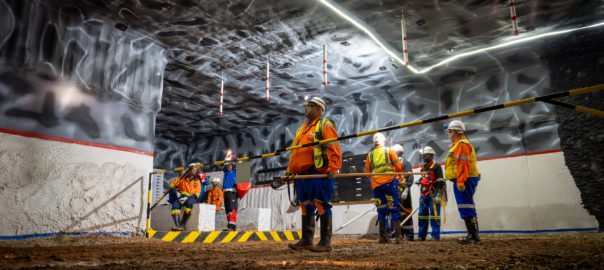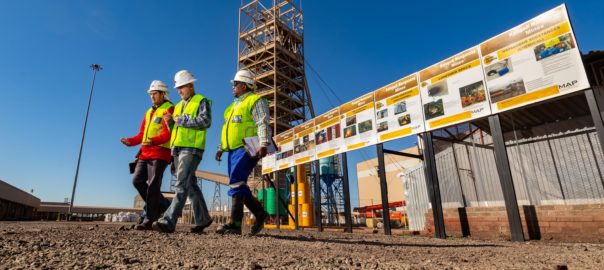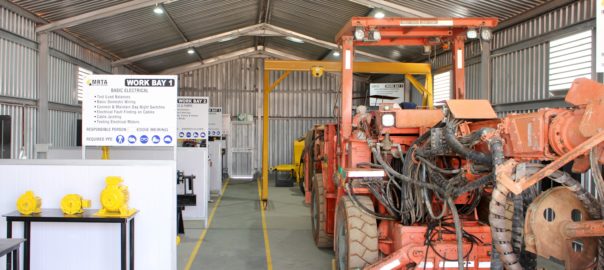Through its new mechanised mining ‘mock-up’ facility, Murray & Roberts Cementation says it is giving equipment operators and supervisors a more realistic learning experience. This enhances safety and is more cost effective than doing this level of training on a working mine, argues Education, Training and Development Executive, Tony Pretorius.
Known for its extensive mine training offering and innovative learning approaches, Murray & Roberts Cementation says it has further raised the bar with this facility for underground mechanised mining.
Pretorius says the new installation is a quantum leap for mining-related training in Africa. Located at the Murray & Roberts Training Academy (MRTA) at the company’s Bentley Park complex near Carletonville in Gauteng, South Africa, the new facility will give a fully immersive learning experience across the underground mining value chain.
“Our new mock-up facility is as close to a real mine as you can get,” Pretorius says. “Learners experience not only the look and feel of an underground bord-and-pillar mine, but even have the smells and sounds of such an operation.”
He emphasises that this experience is a valuable next step to complement the simulated and virtual reality platforms already provided to learners at the MRTA facility. To build skills, operators need to put their theoretical learning into practice – but the pressurised production environment of a real mine is often not the ideal location.
“Rather, our new facility provides a safe and low-cost learning environment, where learners can practice their skills without hindering production or compromising safety,” Pretorius says. “At the same time, they still get the sensory experience for developing the muscle memory they require for the real-life workplace.”
Equipped with essential first-line equipment such as drill rigs and bolters, the facility also has its own machinery for loading, hauling and dumping blasted rock. The realistic environment includes ventilation systems, support structures and blasting systems.
“Learners are taken through the full value chain of mechanised mining activities, from the waiting places, entry exam and safe declaration to the installation of support and cleaning of blasted rock,” Pretorius says. “They conduct marking, drilling and indexing of the face wall, charging up with inert explosives and simulating the blast with a centralised blasting system.”
He explains that MRTA’s extended reality framework follows the situational leadership model, which places considerable value on learner participation in activities – to entrench their applied competence. Built over recent years, the facility is housed in a large covered structure 3.5-m high and covering some 1,125 sq.m. Together with its dedicated equipment, it represents an investment of over R35 million ($1.8 million), he says.









